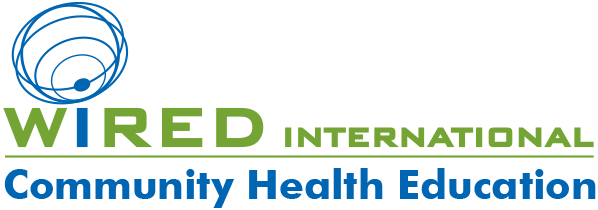WiRED Launches
COVID Vaccinator
Training Program
Providing a global tool for communities
to train vaccinators for the safe and
effective administration of vaccines
Breaking News! WiRED Vaccinator Training Begins This Week in Kenya!
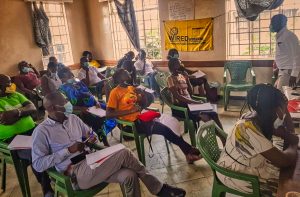 On Monday, March 15, 2021, WiRED launched the first class of our Vaccinator Training Program (VTP) in Obunga, Kenya. Nurse Winnie Nafula and clinician Zablon Kitoli are leading the instruction. Twenty-six students are taking the 45 hours of training, after which they will sit for a final exam, and, if successful, will receive a WiRED certificate. WiRED has already trained 15 Community Health Workers (CHWs), who since the fall of 2020 have made over 6,000 monthly contacts addressing basic health problems and dispensing general health information among their communities. These CHWs have been instrumental in teaching many thousands of people about COVID-19 prevention measures. Soon, they will introduce basic information about COVID-19 vaccines, so the communities will understand the value of the shot and be ready when vaccines arrive.
On Monday, March 15, 2021, WiRED launched the first class of our Vaccinator Training Program (VTP) in Obunga, Kenya. Nurse Winnie Nafula and clinician Zablon Kitoli are leading the instruction. Twenty-six students are taking the 45 hours of training, after which they will sit for a final exam, and, if successful, will receive a WiRED certificate. WiRED has already trained 15 Community Health Workers (CHWs), who since the fall of 2020 have made over 6,000 monthly contacts addressing basic health problems and dispensing general health information among their communities. These CHWs have been instrumental in teaching many thousands of people about COVID-19 prevention measures. Soon, they will introduce basic information about COVID-19 vaccines, so the communities will understand the value of the shot and be ready when vaccines arrive.
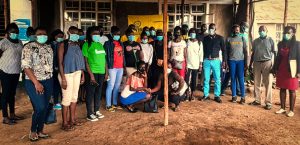 The test class in Kenya will provide us with valuable data on student and instructor perceptions of the program. We will use their feedback to direct any changes that might enrich the training, which WiRED plans to continue in many other locations. Further, WiRED is making the curriculum available to agencies, hospitals and clinics around the world who may need to add competent, effective vaccinators to their outreach vaccination teams.
The test class in Kenya will provide us with valuable data on student and instructor perceptions of the program. We will use their feedback to direct any changes that might enrich the training, which WiRED plans to continue in many other locations. Further, WiRED is making the curriculum available to agencies, hospitals and clinics around the world who may need to add competent, effective vaccinators to their outreach vaccination teams.
At the moment, we’re contacting ministries of health in low-resource countries, the media and other health-related, non-governmental organizations. Our aim is to let people know that WiRED’s VTP, based on the World Health Organization vaccination curriculum, is available to help countries in underserved regions to prepare teams to vaccinate their populations quickly after the arrival of COVID-19 vaccines.
Preparing Local People to Vaccinate
Low-Resource Populations
By Allison Kozicharow; Edited by Jessie Crowdy
The COVAX global effort to deliver the COVID-19 vaccine to underserved countries is well underway. But what needs to happen to get doses from airports to arms?
WiRED International announces the launch of our COVID Vaccinator Training Program (VTP), based entirely on the World Health Organization’s (WHO) training curriculum but with enhanced features to prepare what we call grassroots vaccinators. The objective of WiRED’s program is to train people at the local level to move vaccines safely from central drop-off points to communities, to prepare the communities for vaccinations, to properly screen patients, to administer COVID-19 vaccinations and to monitor patients after the shot.
While the WHO vaccination program is designed for frontline health workers with some medical training, the WiRED program trains locally selected people with no healthcare backgrounds. This will allow vaccinations to be administered in the very regions where doctors, nurses and certified community health workers are scarce. WiRED’s program can train thousands of qualified vaccinators to participate in all aspects of community preparation and the vaccination process. Also, this program can provide refresher training to retired medical professionals who are called back into service to help with vaccinations.
 Each vaccinator will receive 20 hours of WiRED’s curriculum based strictly on WHO vaccination protocols. Students will also receive an additional 20 hours of instruction on basic health, including human anatomy and physiology, principles of infectious disease control and coronavirus infections. Additionally, a five-hour clinical training session will allow students to practice shot clinic set-up and vaccine injections in order to achieve maximum understanding and confidence.
Each vaccinator will receive 20 hours of WiRED’s curriculum based strictly on WHO vaccination protocols. Students will also receive an additional 20 hours of instruction on basic health, including human anatomy and physiology, principles of infectious disease control and coronavirus infections. Additionally, a five-hour clinical training session will allow students to practice shot clinic set-up and vaccine injections in order to achieve maximum understanding and confidence.
(continued below)
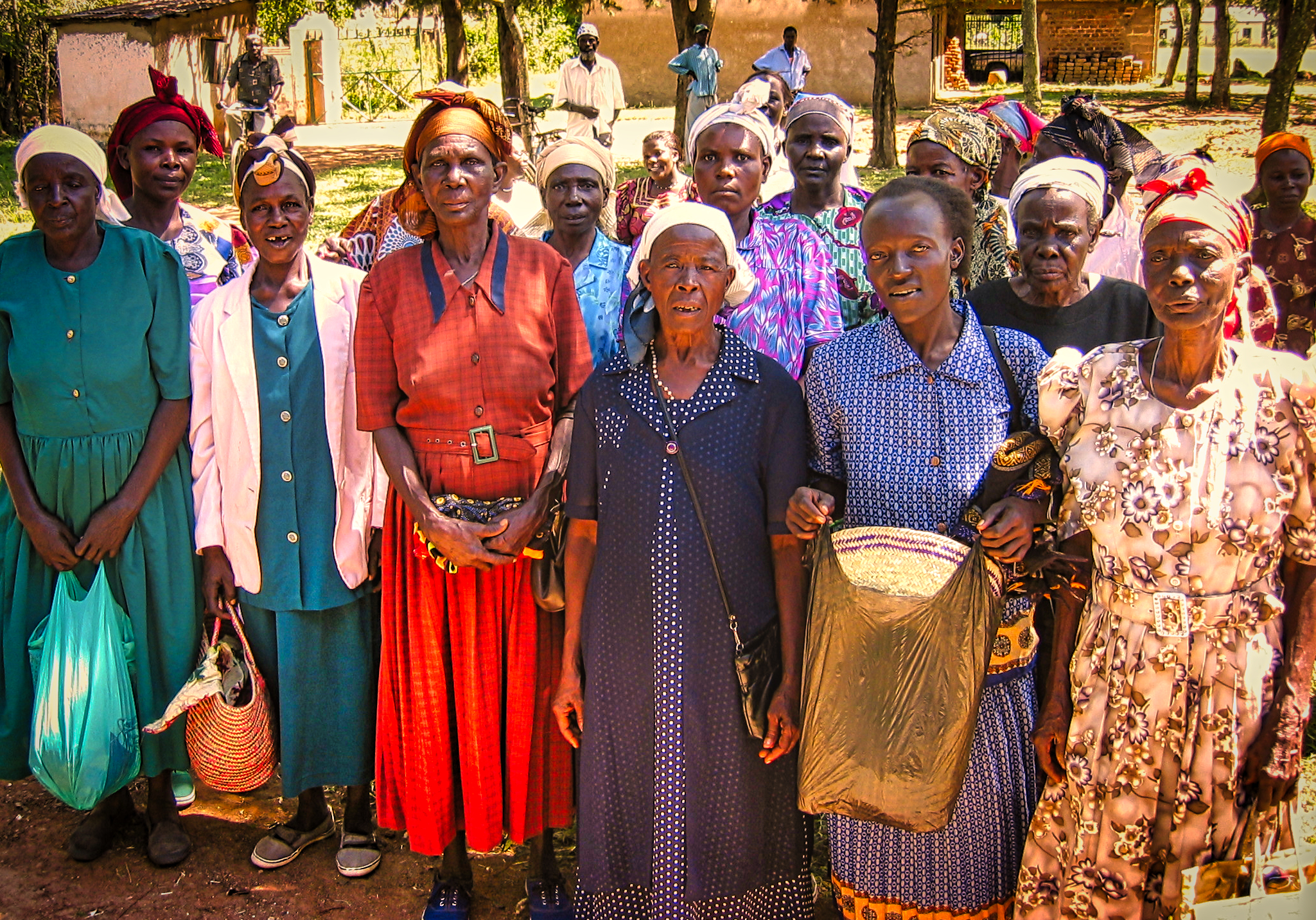
A personal perspective
COVID Vaccinator Training Program
An Example of WiRED’s Volunteer-Driven Approach
By WiRED Executive Director Gary Selnow, Ph.D.
WiRED’s operations in low-resource countries have been volunteer-driven for more than two decades, and the organization continues on the power of volunteers to create and distribute our health education programs. Over the years, we have witnessed the force of dedicated volunteers who put their shoulders to the cart to help people continents away, whom they likely will never meet. Paraphrasing Margret Mead, no one should doubt what a small group of thoughtful, committed citizens can do to improve the lives of others; indeed, it’s the only thing that ever has.
We are now releasing a vaccinator training program, so underserved countries will be able to train a highly competent and qualified group of grassroots vaccinators to administer COVID-19 shots to people in thousands of small communities.
(continued below)
As the 17th Surgeon General of The United States and a staunch supporter of global health, I applaud WIRED for their long standing commitment to addressing global health disparities with programs such as the new vaccinator program. WiRED International's vaccinator training program for underserved regions is an enhanced version of the World Health Organization's Covid vaccination curriculum. This instructor-led course trains people without a medical background to teach about the efficacy and safety of vaccinations to local community members. Further, it trains people to set up shot-clinics, manage the vaccine doses and administer Covid injections. The world needs many thousands of vaccinators to stem the spread of Covid, and the WiRED program efficiently trains community members to effectively vaccinate millions of people in low-resource populations around the world.
(continued from above)
The VTP is designed to be presented by a medical professional instructor — it is not self-taught as is the WHO program. In addition to the five-hour clinical practice session, vaccinators are required to participate in a monthly continuing education program to keep current on evolving COVID-19 issues. The entire WiRED vaccination course can be downloaded by ministries of health, hospitals and health-related NGOs at no charge.
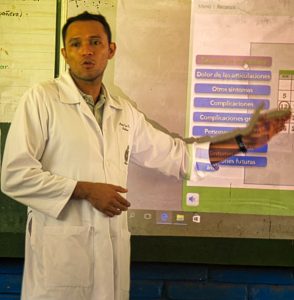 At present, vaccinations offer the only real resolution to the COVID-19 pandemic. Masks and distance help keep the virus at bay, but they are not long-term solutions. Local vaccinators will be the fastest and most effective way to vaccinate people in thousands of communities. The WiRED VTP will fill the gap created by the shortfall of vaccinators in underserved regions. Unless we vaccinate significant portions of the global population, COVID-19 will linger for years and affect all countries.
At present, vaccinations offer the only real resolution to the COVID-19 pandemic. Masks and distance help keep the virus at bay, but they are not long-term solutions. Local vaccinators will be the fastest and most effective way to vaccinate people in thousands of communities. The WiRED VTP will fill the gap created by the shortfall of vaccinators in underserved regions. Unless we vaccinate significant portions of the global population, COVID-19 will linger for years and affect all countries.
The WiRED VTP Curriculum
Curriculum (based on WHO guidelines):
Module 1: Introduction to COVID-19 vaccination training. This module offers an introduction to the course, whose objective is to provide key information on COVID-19 vaccination to community health workers.
Module 2: Storage, handling, delivery, and waste management of COVID-19 vaccines. This module consists of three sections, which provide knowledge about the programmatic implications of COVID-19 vaccines; managing storage, transport and delivery of COVID-19 vaccines; and cold-chain management at the vaccination post and waste management at the facility level.
Module 3: Organizing COVID-19 vaccination sessions. This module explains how to: outline infection prevention and control measures during vaccination sessions to protect health workers, vaccine recipients, and the community; prepare for vaccination sessions according to infection prevention and control protocols (at the health facility, for outreach and for a campaign); and outline the process of safe COVID-19 vaccine administration and waste disposal.
Module 4: Vaccinating process and procedures. This module explains the steps on how to: administer an intramuscular injection; prepare the equipment; prepare single- and multi-dose vials; position the patient correctly; and dispose of waste appropriately.
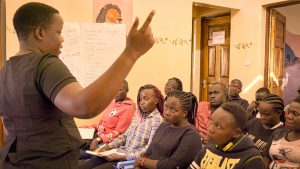 Module 5: AEFI monitoring for COVID-19 vaccination. This module describes how to: detect an adverse event following immunization (AEFI); identify and respond to AEFI; and report AEFI following COVID-19 vaccination.
Module 5: AEFI monitoring for COVID-19 vaccination. This module describes how to: detect an adverse event following immunization (AEFI); identify and respond to AEFI; and report AEFI following COVID-19 vaccination.
Module 6: Recording and monitoring COVID-19 vaccination. This module describes the importance of proper recording and reporting; how to recognize recording and registration forms; how to correctly record vaccination data and register vaccinations in the reporting forms; and how to track defaulters (if applicable).
Module 7: Communication with the community about COVID-19 vaccination. This module describes community health workers’ roles and responsibilities for COVID-19 vaccination; demonstrates effective and individualized communications about COVID-19 vaccination; explains communication strategies for three potential scenarios with community members; and outlines the role of a vaccinator in crisis communication for adverse events following immunization.
Supplemental Training
Anatomy Fundamentals, 2 parts. This two-part module provides an understanding of anatomy and physiology, which together comprise the structure and functions of the human body, and describes the major body systems and their components. Also discusses the body’s major systems: the nervous system, the respiratory system, the digestive system, the urinary system, the endocrine system, the lymphatic system and the male and female reproductive systems.
Understanding Communicable Diseases, 2 parts. This two-part module presents an overview of infection control, preparedness and modes of transmission, and discusses the role of CHWs in addressing infectious diseases.
Coronavirus. The module offers a general introduction to the new coronavirus (COVID-19) and describes the infection and its close relationship to other coronaviruses, how it is spread, its incubation period and symptoms, treatment and most important — its prevention.
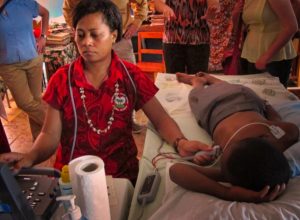 Understanding Vital Signs and Basic Assessment of the Systems. This module examines basic procedures for taking vital signs, including temperature, pulse rate, blood pressure and respiration rate. It offers “how-to” information and explains how each measure relates to health assessment.
Understanding Vital Signs and Basic Assessment of the Systems. This module examines basic procedures for taking vital signs, including temperature, pulse rate, blood pressure and respiration rate. It offers “how-to” information and explains how each measure relates to health assessment.
Communication Skills. This module covers interpersonal and group communication, persuasion, relationship building, message development and other skills necessary to CHWs as communicators.
Notes:
- For each vaccine approved by WHO and other appropriate health agencies, WiRED will offer a separate module to describe specific storage requirements, vaccine preparation and all other relevant details of that vaccine.
- WiRED’s physicians and nurses wrote Module 4, an addition to the WHO curriculum.
Readers interested in a summary version of WiRED’s Vaccinator Program
can download and print this pdf.
Agencies and organizations dispensing the COVID-19 vaccine and deploying vaccinators are invited to contact WiRED International for details about adopting this program. It is cost-free to all health-related facilities involved with vaccine administration.
For additional information about this COVID-19 Vaccinator Training Program, please complete this brief form.
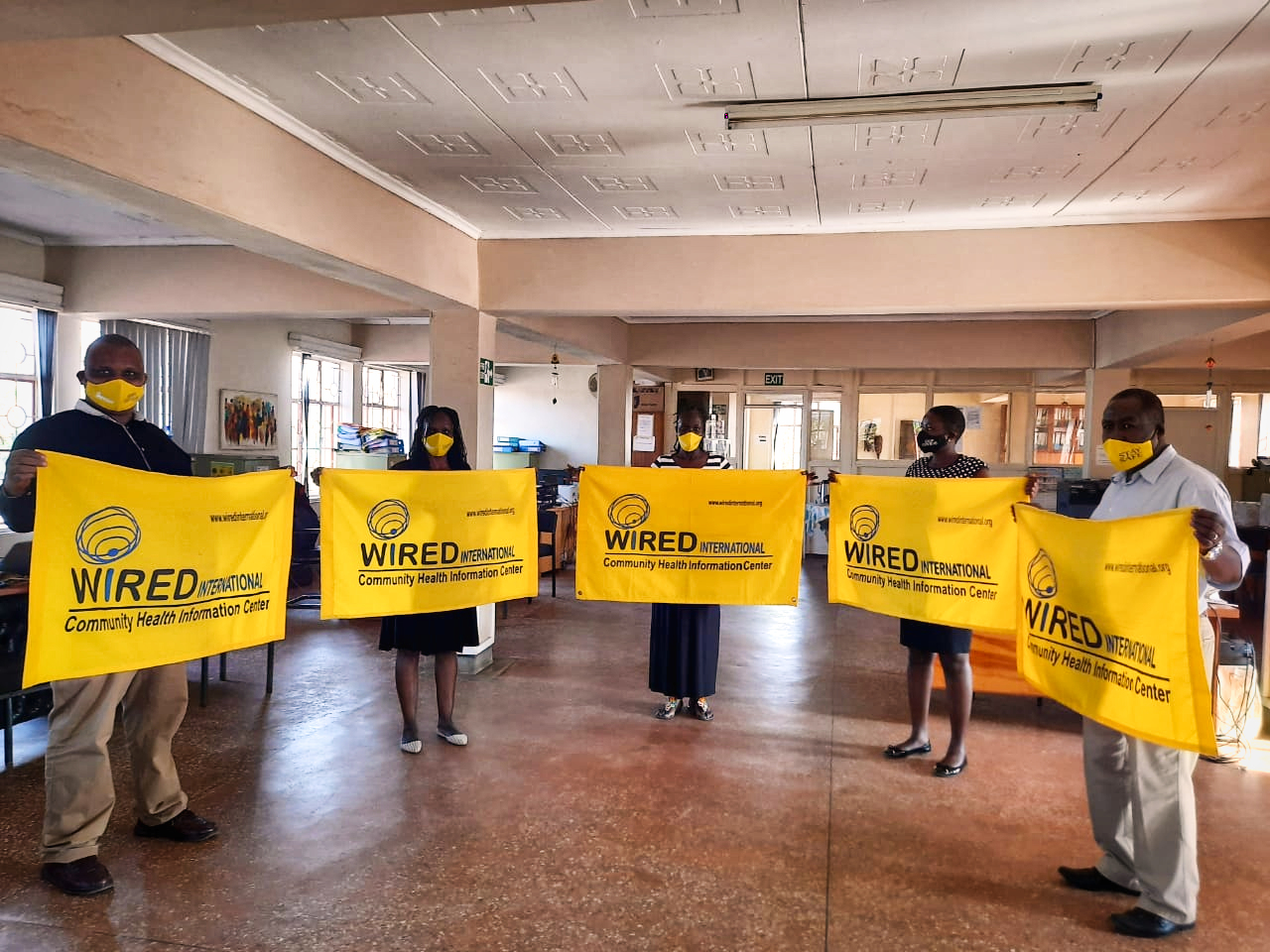
(continued from above)
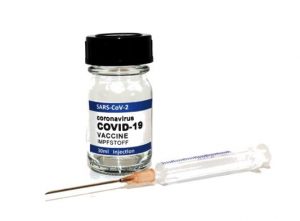 In WiRED’s many years of operation, I don’t think we ever developed a project that has drawn more time and expertise from volunteers who have been so deeply involved in every aspect of the work. Each person brought to the table his or her skills and a deep commitment to the project.
In WiRED’s many years of operation, I don’t think we ever developed a project that has drawn more time and expertise from volunteers who have been so deeply involved in every aspect of the work. Each person brought to the table his or her skills and a deep commitment to the project.
The process
First, volunteers researched this question: How can we as health educators assist with a global effort to defeat COVID? Based on the evidence of a need, we settled firmly on a grassroots vaccinator training program, an undertaking that would draw heavily on WiRED’s expertise to train populations in low-resource regions.
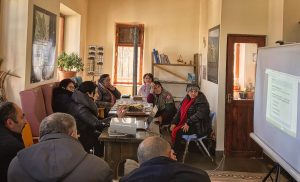 Medical professionals, all volunteers, then wrote the training modules, using as a foundation the World Health Organization’s (WHO) curriculum for people with a medical background. WiRED’s lead writer enhanced the WHO program in order to appropriately train grassroots vaccinators — competent people who come to the project without a medical background. Our team knew that where medical professionals are scarce, trained community members would need to step in. Our successful Community Health Worker program clearly demonstrates that ordinary people can learn the skills necessary to improve the health of their communities. We applied those lessons to this vaccinator curriculum.
Medical professionals, all volunteers, then wrote the training modules, using as a foundation the World Health Organization’s (WHO) curriculum for people with a medical background. WiRED’s lead writer enhanced the WHO program in order to appropriately train grassroots vaccinators — competent people who come to the project without a medical background. Our team knew that where medical professionals are scarce, trained community members would need to step in. Our successful Community Health Worker program clearly demonstrates that ordinary people can learn the skills necessary to improve the health of their communities. We applied those lessons to this vaccinator curriculum.
The text of the training modules, written by volunteer medical experts, was sent to a group of volunteer peer reviewers. These are senior nursing professors, with many years of experience in hospitals and in field work and in nursing school classrooms. Volunteer physicians, too, went over the modules, and these doctors and nurses, these medical professionals, were a critical part of the process to be sure we got it right — that the WHO procedures were followed to a T, and that the features enhancing the WHO curriculum were accurate and beneficial to the community vaccinators who would take the course.
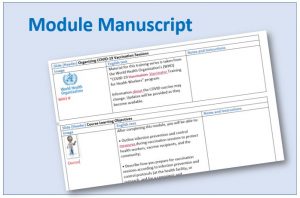 The peer-reviewed and adjusted manuscript was sent out to volunteer text editors and medical editors who examined every aspect of the material. They built in questions and answers throughout each module in order to test the knowledge of students and to drive home the main points, so the students would understand the key concepts and remember them. That process is an application of good learning theory.
The peer-reviewed and adjusted manuscript was sent out to volunteer text editors and medical editors who examined every aspect of the material. They built in questions and answers throughout each module in order to test the knowledge of students and to drive home the main points, so the students would understand the key concepts and remember them. That process is an application of good learning theory.
The edited manuscripts then went to a volunteer who structured the text and added images that illustrated the concepts in each of the modules. This “imager/blocker” drafted layout instructions then sent the modules to the computer specialist.
The computer specialist assembled the script into an interactive program that would allow instructors to move point by point through each module, bringing to life the key concepts and the lessons student vaccinators would need to know. This information technology (IT) expert formatted the interactive quizzes and a final exam for each module. The final is a grand test of knowledge to gauge student mastery of the material. When students get a question wrong, the IT made sure the program will provide instant feedback to explain the correct answer.
 The IT then sent the computerized modules back to a volunteer reviewer. This particular reviewer examined the material in an earlier form and now looked at it with all the graphics and questions and videos and other elements in a completed form. This volunteer is very special. So special that we call her Inspector-12. Readers may recall Inspector-12 from Haynes TV advertisements in the mid-1980s. No Haynes T-shirt left the factory until Inspector-12 signed off! Our Inspector-12, I-12 for short, is just as particular, and no module leaves WiRED until she signs off. And so our I-12 went through every item, every word, every comma, and only after she said it was done, was it done.
The IT then sent the computerized modules back to a volunteer reviewer. This particular reviewer examined the material in an earlier form and now looked at it with all the graphics and questions and videos and other elements in a completed form. This volunteer is very special. So special that we call her Inspector-12. Readers may recall Inspector-12 from Haynes TV advertisements in the mid-1980s. No Haynes T-shirt left the factory until Inspector-12 signed off! Our Inspector-12, I-12 for short, is just as particular, and no module leaves WiRED until she signs off. And so our I-12 went through every item, every word, every comma, and only after she said it was done, was it done.
That was just the curriculum.
Volunteers working on other items for this program
While curriculum volunteers were putting in hundreds of hours to develop the course, another group of volunteers was working tirelessly on Web stories and outreach programs, on videos, on promotion and on fund-raising. Meanwhile others were preparing the program rollout in test regions abroad, making arrangements with medical professionals who would teach the grassroots vaccinators. Volunteers working on these tasks had Zoom meetings and phone calls and exchanged hundreds of emails to coordinate efforts. Everything at WiRED is collaborative. We like the African proverb: If you want to go fast, go alone. If you want to go far, go together.
 As we release this program — our volunteers’ gift to ministries of health, hospitals, clinics, health-related non-governmental organizations and to the good people of underserved communities everywhere — we anticipate one more step: translations. When all is said and done, this training course will have nearly 50,000 words, and we will need to translate every one of them into other languages. We’ll start with Spanish, then see where the program is adopted and create language versions appropriate for those locations. Volunteers will do the translations. It’s a huge undertaking, but people will show up to make this program available to millions more in areas of the world that suffer from the virus.
As we release this program — our volunteers’ gift to ministries of health, hospitals, clinics, health-related non-governmental organizations and to the good people of underserved communities everywhere — we anticipate one more step: translations. When all is said and done, this training course will have nearly 50,000 words, and we will need to translate every one of them into other languages. We’ll start with Spanish, then see where the program is adopted and create language versions appropriate for those locations. Volunteers will do the translations. It’s a huge undertaking, but people will show up to make this program available to millions more in areas of the world that suffer from the virus.
A final thought
And so here, as with so many other WiRED programs developed over the past two decades, determined groups of volunteers pooled their talents to create a remarkable program that stands to fill a gap in the distribution of COVID vaccines. Many volunteers have been driven by the belief that their contribution will make a significant impact on people often forgotten and who suffer as much from this virus as anyone. Some of these volunteers also may have been compelled by a more fundamental calling that answers the appeal of Dr. Martin Luther King: Life’s most persistent and urgent question is, what are you doing for others?
We recognize the following volunteers who worked on this program:
Eric Achola
Jason Bowler, R.N.
Santiago Castellón, M.A.
Richard Carmona M.D., M.P.H., FACS
Christopher Ceja
Ellen Crane
Suellen Crano, Ph.D.
William Crano, Ph.D.
Jessie Crowdy, M.A.
Lillian Dajoh
Jon Eklund, M.F.A.
Alexandria Escobedo MBA
Carol Essick, M.S.N., R.N.
Charlotte Ferretti, Ed.D., R.N.
Elizabeth Fine, Ph.D.
Robert C, Geibert, Ed.D., R.N.
Mitchell Gosvener, R.N.
Mary Jo Gruca
Jennifer Halling
Patricia Hokenson, M.S.N., R.N.
Kaylee Johnson, R.N.
Fiona Jones, M.F.A.
Zablon Kitoli, CV
Allison Kozicharow
Matt Lang
Ann Mangold
Michael Marinello MSN, FNP-C
Winnie Nafula
Miriam Othman, M.D., M.P.H.
Diana Purucker
Virgil Scudder
Ken Scudder
Christopher Spirito
Olivia Spirito
Meghan Spirito
Alan Stacy, Ph.D.

